Seemingly lost to war and jungle only a quarter-century ago, the ancient temples of Angkor are fast becoming one of Asia's top tourist destinations.
On April 1, the number of hotel rooms in Siem Reap, the town nearest the site, reached 5,000, a 50 percent jump over the number six months earlier. The newer places include the Angkor Palace Resort and Spa, the Victoria Angkor Hotel and the Goldiana Angkor Hotel. To fill these hotel rooms, entrepreneurs are opening new land, sea, and air routes to Siem Reap, now Cambodia's No. 1 tourism destination.
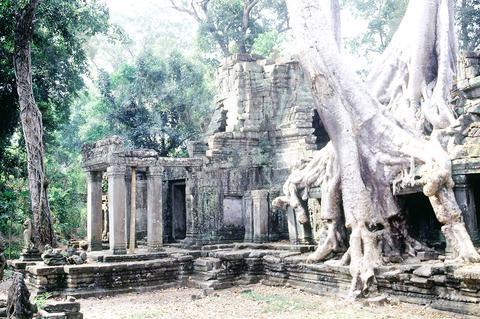
PHOTO: NY TIMES NEWS SERVICE
As memories of Cambodia as a dangerous destination fade, the country seems likely to attract a million foreign tourists this year, a third more than last year.
For the buses that bring in backpacking tourists, the number of border crossings from Thailand has increased to five, from two last year. In a few months, paving is to be completed on a highway between here and Phnom Penh, the nation's capital, 200 miles south.
When the peak tourism season began last November, a fast, air-conditioned boat service was inaugurated between Siem Reap and Phnom Penh. The boat trip along the Tonle Sap river and lake takes six hours, compared with 45 minutes for one of the nine daily domestic flights. And should visitors wish to bypass the capital, there are now direct flights to Siem Reap from Hong Kong; Singapore; Hanoi; Ho Chi Minh City; Bangkok; Phuket, Thailand; Kunming, China and Vientiane, Laos.
When the dry season returns next fall, Korean Airlines plans to start scheduled service from Seoul. Bangkok Air has a monopoly on flights here from the Thai capital, with seven a day making the one-hour hop. Charter flights started from Japan last December, an indicator that scheduled service may not be far away.
Phnom Penh has ample charms, with the classic gold and white roofs of the Royal Palace and the lazy, chocolate-colored waters of the Mekong River. But Kenneth Cramer, an American who publishes free guides to the two cities, says his Angkor guide is bigger than his Phnom Penh guide.
"Siem Reap is exploding," John Vink, a Phnom Penh-based photographer, said on his first visit here in two years. Over a lunch at the Cafe Indochine, he explained, "There is an incredible amount of construction."
Questions plague many here: Can hoteliers fill the beds? Can the temples withstand the crowds?
"In June, we could not sell a cup of coffee," Mathieu Ravaux, the French owner of Chez Sop'hea, as he struggled six months later to keep up with carloads of French tourists rolling up to his restaurant across from the main entrance to Angkor Wat.
Although Cambodia has never recorded a SARS case, the number of foreign visitors to Angkor was down last year through August largely because of fears that SARS would spread throughout Asia. Bouncing back, Angkor recorded 46,070 foreign visitors in December, a monthly record. The total for last year was 321,557 visitors, or 5,860 more than in 2002.
To prepare for more tourists, international aid donors have been providing financing for improved transportation infrastructure in the temple area -- new road signs, newly paved roads through the most popular temple areas and a new air terminal for international arrivals, complete with marble floors and modern thin-screen flight monitors.
To ensure the availability of clean drinking water, Siem Reap province has embarked on a US$10 million water supply project, financed by Japan. Separately, work is to start in June on a US$3.5 million sewer system and treatment plant, financed by the Asian Development Bank. With the temple area completely cleared of land mines, the biggest physical danger to visitors is crossing streets choked with motorbikes.
During the New Year's holidays, Angkor's gray temple stones echoed with the babble of Cambodian guides addressing tour groups in English, French, German, Italian, Japanese, Chinese and Korean.
Tickets to the temple sites are not priced to encourage off-season visits or to encourage high-season tourists to space out their visits. Most buy a US$40, three-day pass. Instead of allowing tourists to spread their visits to the temples out over a week, they have to be used consecutively. By the end of Day 2, many visitors are "templed out."
Karen Mannion, a gung-ho Irish visitor, looked exhausted. Standing in front of the main entrance to Angkor Wat, she said of her tour of the highlights of the area: "It's too disorienting. It's too much."
Agreeing with this sentiment, hoteliers hope to move Angkor tourism in the direction of longer visits, instead of greater numbers.
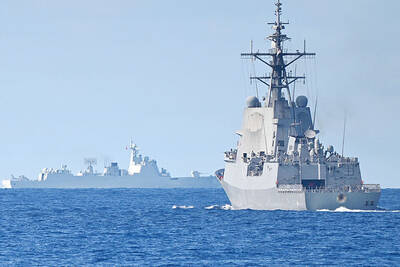
RESPONSE: The transit sends a message that China’s alignment with other countries would not deter the West from defending freedom of navigation, an academic said Canadian frigate the Ville de Quebec and Australian guided-missile destroyer the Brisbane transited the Taiwan Strait yesterday morning, the first time the two nations have conducted a joint freedom of navigation operation. The Canadian and Australian militaries did not immediately respond to requests for comment. The Ministry of National Defense declined to confirm the passage, saying only that Taiwan’s armed forces had deployed surveillance and reconnaissance assets, along with warships and combat aircraft, to safeguard security across the Strait. The two vessels were observed transiting northward along the eastern side of the Taiwan Strait’s median line, with Japan being their most likely destination,
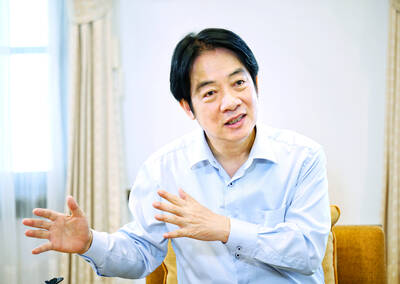
GLOBAL ISSUE: If China annexes Taiwan, ‘it will not stop its expansion there, as it only becomes stronger and has more force to expand further,’ the president said China’s military and diplomatic expansion is not a sole issue for Taiwan, but one that risks world peace, President William Lai (賴清德) said yesterday, adding that Taiwan would stand with the alliance of democratic countries to preserve peace through deterrence. Lai made the remark in an exclusive interview with the Chinese-language Liberty Times (sister paper of the Taipei Times). “China is strategically pushing forward to change the international order,” Lai said, adding that China established the Asia Infrastructure Investment Bank, launched the Belt and Road Initiative, and pushed for yuan internationalization, because it wants to replace the democratic rules-based international
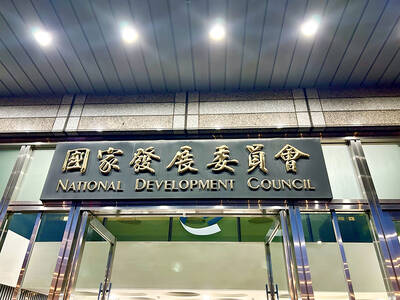
The National Development Council (NDC) yesterday unveiled details of new regulations that ease restrictions on foreigners working or living in Taiwan, as part of a bid to attract skilled workers from abroad. The regulations, which could go into effect in the first quarter of next year, stem from amendments to the Act for the Recruitment and Employment of Foreign Professionals (外國專業人才延攬及僱用法) passed by lawmakers on Aug. 29. Students categorized as “overseas compatriots” would be allowed to stay and work in Taiwan in the two years after their graduation without obtaining additional permits, doing away with the evaluation process that is currently required,
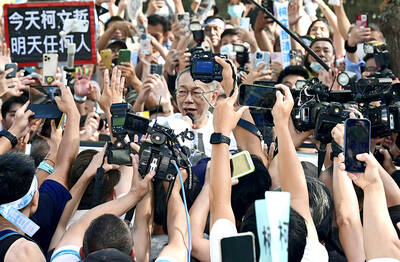
RELEASED: Ko emerged from a courthouse before about 700 supporters, describing his year in custody as a period of ‘suffering’ and vowed to ‘not surrender’ Former Taiwan People’s Party (TPP) chairman Ko Wen-je (柯文哲) was released on NT$70 million (US$2.29 million) bail yesterday, bringing an end to his year-long incommunicado detention as he awaits trial on corruption charges. Under the conditions set by the Taipei District Court on Friday, Ko must remain at a registered address, wear a GPS-enabled ankle monitor and is prohibited from leaving the country. He is also barred from contacting codefendants or witnesses. After Ko’s wife, Peggy Chen (陳佩琪), posted bail, Ko was transported from the Taipei Detention Center to the Taipei District Court at 12:20pm, where he was fitted with the tracking